Updated by Nazanin Ghodsian, 10/15/2024
Construction megaprojects, also called “Major programs,” are a special class of large-scale undertakings that surpass traditional projects in terms of magnitude, intricacy, and social impact. These initiatives usually involve a complicated network of public and commercial players, span several years, and have costs surpassing $1 billion. Their revolutionary power frequently results in significant economic expansion, urban redevelopment, and infrastructure development. But overseeing massive construction projects is not for the weak of heart—it’s akin to asking a driver of a car to operate a jumbo plane.
Megaproject construction is known for its difficulties, which have been extensively recorded over many years. A startling 90% of megaprojects experience cost overruns, with many going beyond their actual budgets by more than 50%. Similar to how common delays are, most projects don’t finish by the intended deadline. For more than 70 years, this pattern has been present, and these endeavors are frequently seen as high-risk endeavors.
Complications thrive on the scope and complexity of construction megaprojects. Extended periods, frequently extending years or even decades, increase the likelihood of conflicts emerging amongst the multiple stakeholders, each bringing distinct interests and goals to the table. Delays in decision-making can lead to the emergence of inefficiencies. Furthermore, while using cutting-edge designs or non-standard technologies may have advantages, project management may become biased as a result. Early adherence to particular project principles frequently prevents later project development from considering other options.
There are additional difficulties because of the sheer size of budgets. As the financial scope increases, rent-seeking behavior—where people or groups attempt to obtain additional financial benefits without adding to productivity—becomes a bigger risk. Furthermore, the scope and objectives of a project frequently change over time, sometimes in ways that go beyond the initial budget, raising the possibility of additional issues and cost overruns.
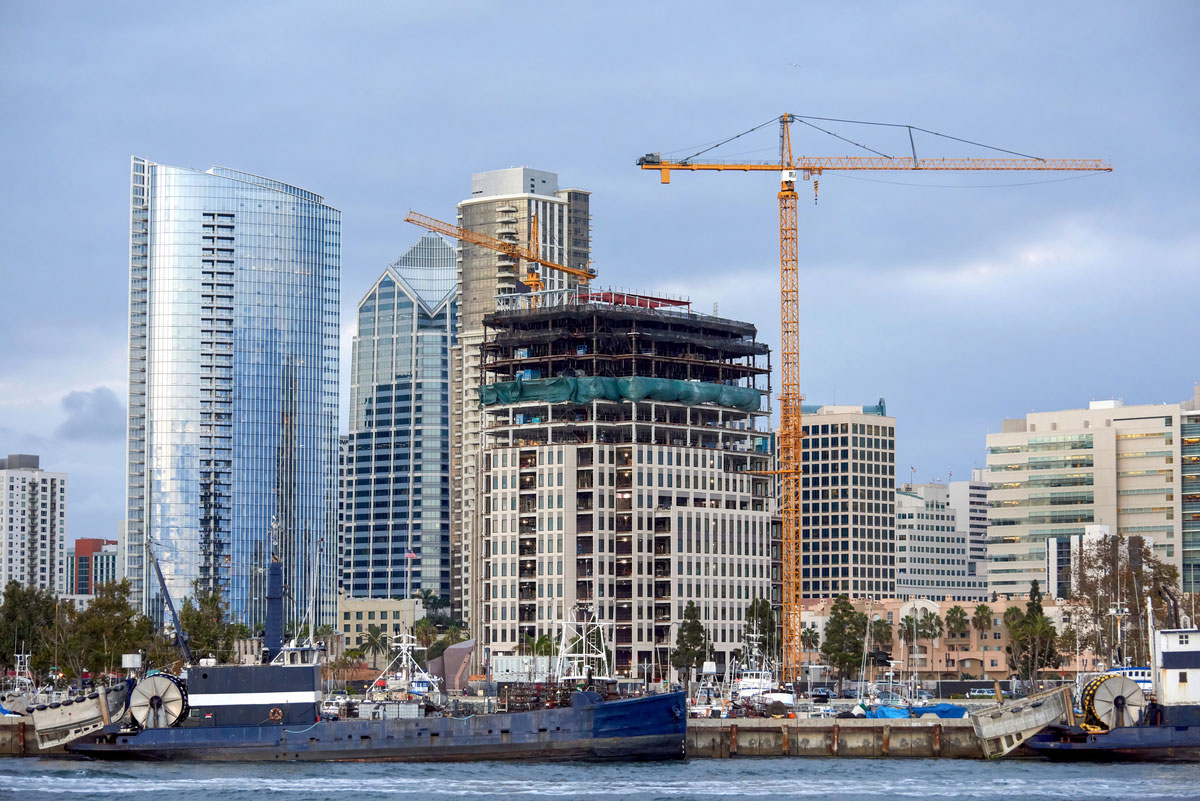
Table of Contents
Construction Megaprojects: An Unprecedented Global Growth
Construction Megaprojects are on an unprecedented growth trajectory worldwide, rapidly expanding across various sectors, including transportation, energy, aerospace, information technology, supply chains, defense, and more. A notable example of this trend is China’s remarkable feat of constructing as many kilometers of high-speed rail between 2005 and 2008 as Europe achieved in two decades.
This phenomenon’s impact reverberates through industries, with a conservative estimate pegging the global megaproject market at a staggering $6 to $9 trillion annually. Remarkably, construction megaprojects have displayed resilience even during economic downturns, as witnessed during the 2008 recession when the megaproject sector continued to flourish.
This underscores the pressing need to carefully select and execute projects while ensuring their economic, social, and environmental impacts align with their objectives. In this context, possessing systematic and valid knowledge about construction megaprojects becomes crucial.
Through extensive research, four drivers, often referred to as “sublimes,” have emerged to explain the growth and development of construction megaprojects:
- Technological Sublime: This reflects the enthusiasm of engineers and technologists in pushing the boundaries of what is achievable in “longest-tallest-fastest” types of projects.
- Political Sublime: Politicians are drawn to constructing monumental infrastructure projects for personal and political gain, further fueling megaproject expansion.
- Economic Sublime: Business leaders and trade unions derive immense satisfaction from the economic benefits, job creation, and financial gains associated with construction megaprojects.
- Aesthetic Sublime: Designers and individuals with an appreciation for aesthetics find joy in building and utilizing iconic and visually appealing construction megaprojects.
Policymakers are naturally inclined toward construction megaprojects because, if executed correctly, they offer numerous advantages, including job creation, domestic input promotion, enhanced productivity and competitiveness, improved service quality for consumers, and positive environmental outcomes.
Navigating the Megaproject Paradox: Overcoming Challenges and Ensuring Success
Statistical evidence underscores a tendency to underestimate the complexity and unpredictability inherent in construction megaprojects, leading to budgetary oversights. Misinformation regarding costs, schedules, benefits, and risks further compounds the problem, resulting in frequent cost overruns, delays, and benefit shortfalls. This persistent pattern has given rise to the notion of the “iron law,” wherein construction megaprojects consistently exceed budgets, surpass timelines, and underdeliver on benefits.
Despite these formidable challenges, the demand for construction megaprojects continues to surge, both in terms of frequency and scale. This paradoxical trend has given rise to a project delivery model known as the “break-fix” approach, where projects often encounter difficulties necessitating mid-course corrections to salvage some semblance of success. Unfortunately, this inefficient method leads to resource misallocation, further exacerbating the risks associated with construction megaprojects.
Considering this paradox, innovative approaches and incentives are urgently needed to ensure the successful execution of these mammoth endeavors. Addressing the systemic issues, embracing advanced management methods, and fostering transparency in project planning and execution are essential steps toward mitigating the inherent challenges of construction megaprojects.
Here’s the list of the top 11 mega projects around the world:
1. Four Frankfurt
Location: Frankfurt, Germany
Total Cost: US$1.4 billion
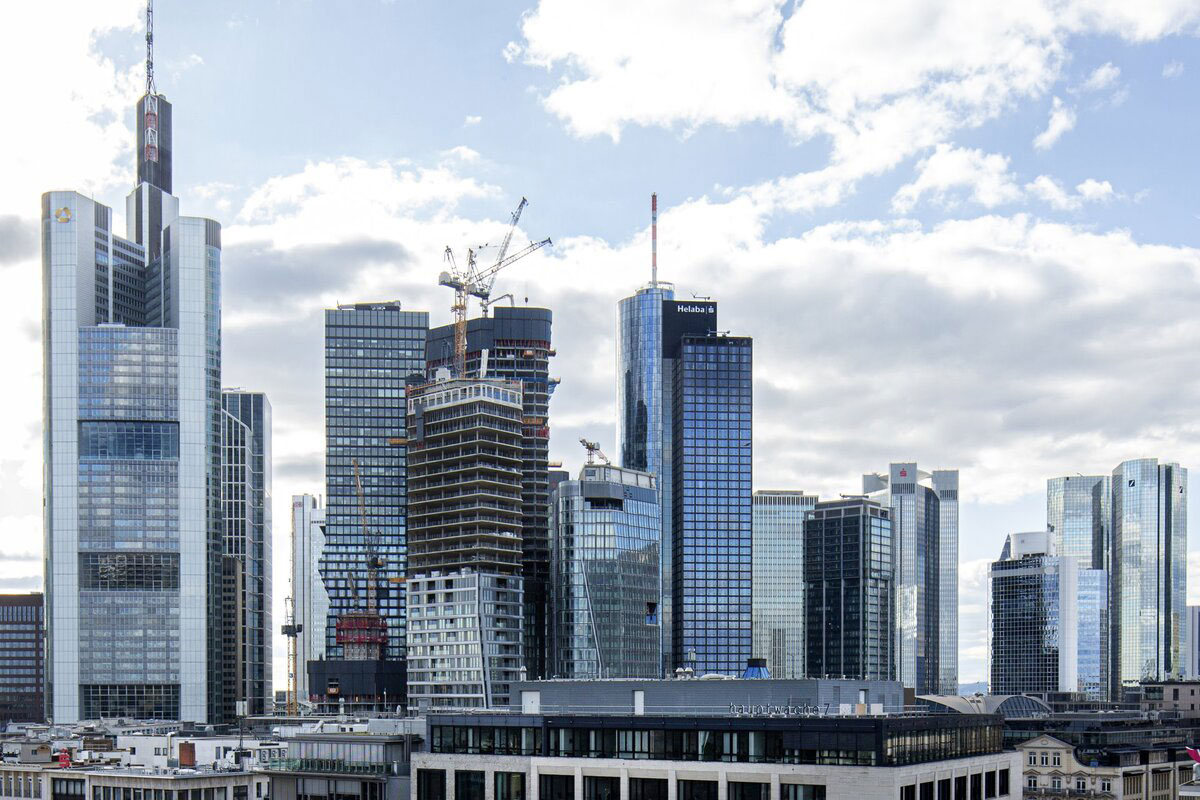
Four high-rise buildings are currently under construction in Frankfurt, with each boasting the city’s highest residential and office floors. These towering structures are set to redefine the city’s skyline, reaching impressive heights of up to 233 meters. The project aims to introduce approximately 600 new apartments to Frankfurt’s housing market, alongside a vibrant ground-level infrastructure featuring a diverse range of shopping and dining options.
Key Points:
- Architectural Vision: The project’s visionary design, led by Amsterdam-based architectural firm UN Studio, seamlessly blends modernity with historical preservation. It prioritizes the conservation of heritage-listed façades along Junghofstraße, creating a harmonious integration of old and new within the urban landscape.
- Project Oversight: IGP Ingenieur, a construction management specialist, is overseeing the project in collaboration with developer Groß & Partner. Their meticulous planning ensures the timely completion of this ambitious endeavor.
- Formwork Expertise: The Peri Group’s formwork experts play an integral role in the project’s success. Working closely with primary contractor GP Con, they are responsible for simultaneously constructing the concrete cores of all four towering structures. Innovative self-climbing systems are employed to efficiently erect formwork on each floor, showcasing the project’s commitment to construction efficiency and innovation.
2. New Administrative Capital
Location: Egypt
Total Cost: US$3 billion
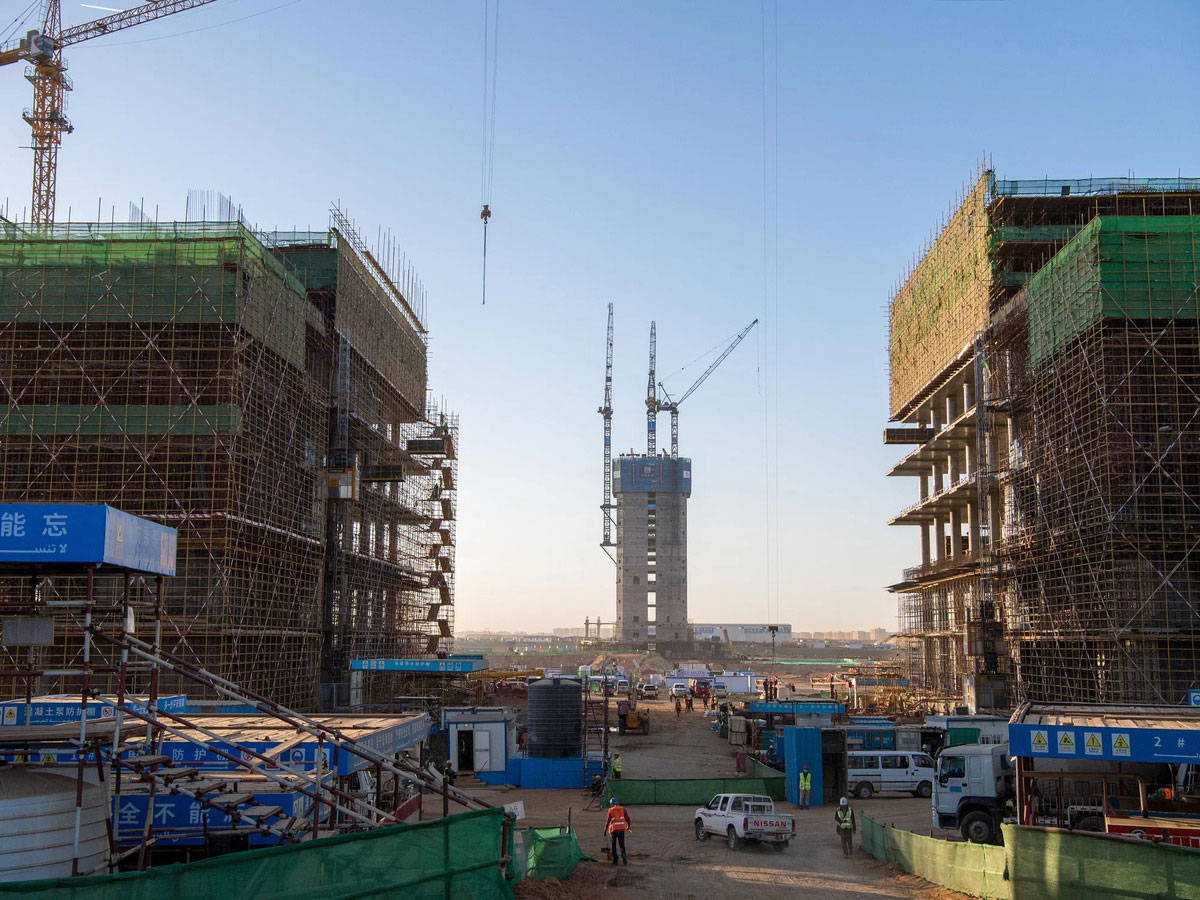
The New Administrative Capital, located in the Cairo Governorate of Egypt, is an ambitious urban development project poised to become the nation’s new capital. This endeavor aims to stimulate Egypt’s economic growth by providing new residential, commercial, and recreational spaces to its residents and visitors.
Key Points:
- Rivaling Singapore’s Size: The New Administrative Capital is set to rival the dimensions of Singapore, promising significant urban expansion and diversification of economic opportunities within Egypt.
- Africa’s Tallest Skyscraper: At its core, this burgeoning metropolis features Africa’s soon-to-be tallest skyscraper, projected to reach a soaring height of approximately 393 meters. This remarkable feat exceeds South Africa’s The Leonardo by nearly 160 meters, making it a striking addition to the skyline.
- Architectural Marvel: The skyscraper showcases cutting-edge engineering and design, boasting a robust central reinforced concrete core seamlessly integrated with composite peripheral columns. Supported by a substantial 5-meter-thick reinforced concrete foundation, the tower’s sleek glass facade adds a contemporary touch of elegance to the cityscape.
- CSCEC’s Oversight: The China State Construction Engineering Corporation (CSCEC) oversees this monumental project, with financial backing from the Belt and Road Initiative (BRI). As the development progresses, the world eagerly awaits its completion, scheduled for a grand unveiling in 2024.
3. Fontainebleau Las Vegas
Location: Las Vegas
Total Cost: US$3.7 billion
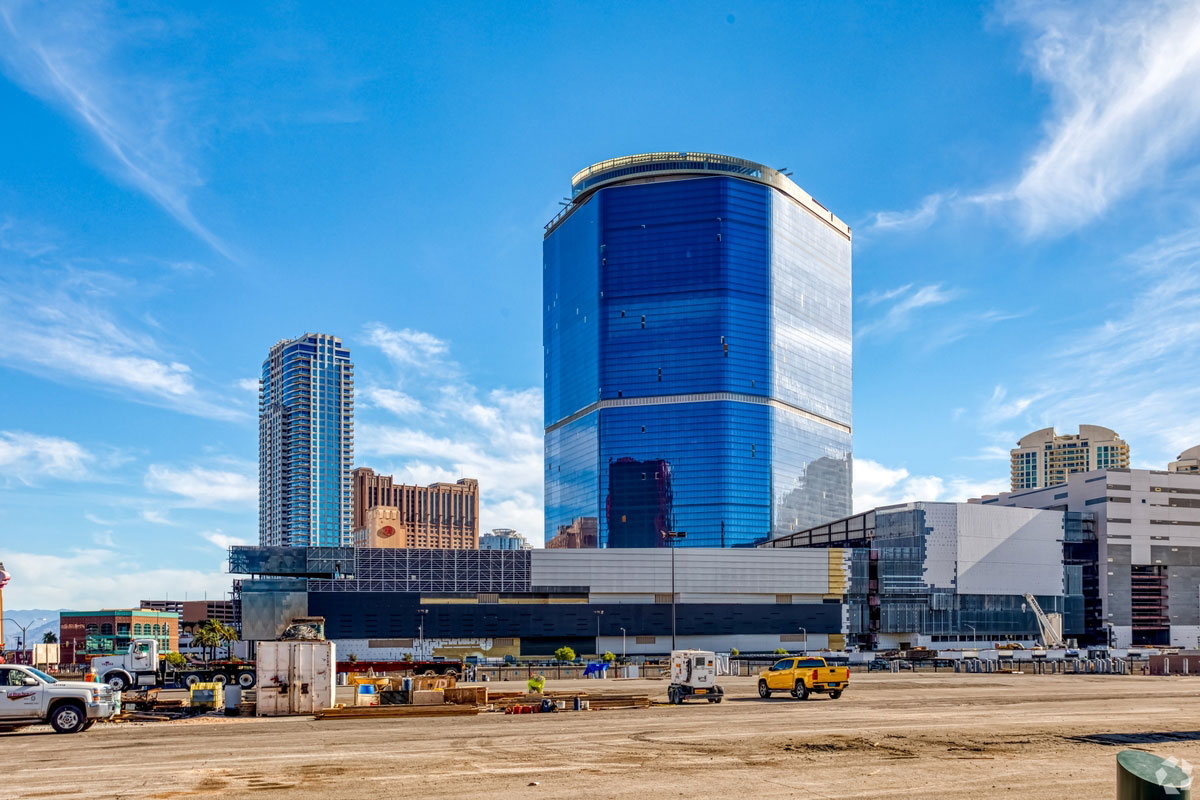
In a recent press release, Fontainebleau Development and Koch Real Estate Investments unveiled a significant development in the Fontainebleau Las Vegas luxury resort and casino project.
Key Points:
- Secured $2.2 billion construction loan:
- Fontainebleau Development and Koch Real Estate Investments have successfully secured a construction loan of $2.2 billion.
- This financial milestone ensures the timely completion of the Fontainebleau Las Vegas complex.
- Project overview:
- The Fontainebleau Las Vegas project encompasses a 67-story complex.
- It includes various components such as hotel accommodations, gaming facilities, meeting spaces, and entertainment venues.
- The project is on track for completion in the fourth quarter of 2024.
- History of the project:
- The journey of this development began in 2007 but faced interruptions during the Great Recession.
- Ownership changed hands over the years, encountering various challenges.
- The COVID-19 crisis in 2020 led to another temporary pause in construction activities.
- Impressive dimensions:
- The Fontainebleau Las Vegas complex spans 25 acres.
- It offers a vast 9 million square feet of space.
- The strategic location at the northern end of the Las Vegas Strip, adjacent to the Las Vegas Convention Centre, positions it as a prominent landmark in the city’s vibrant hospitality and entertainment scene.
4. Toranomon-Azabudai District
Location: Japan
Total Cost: US$4.2 billion
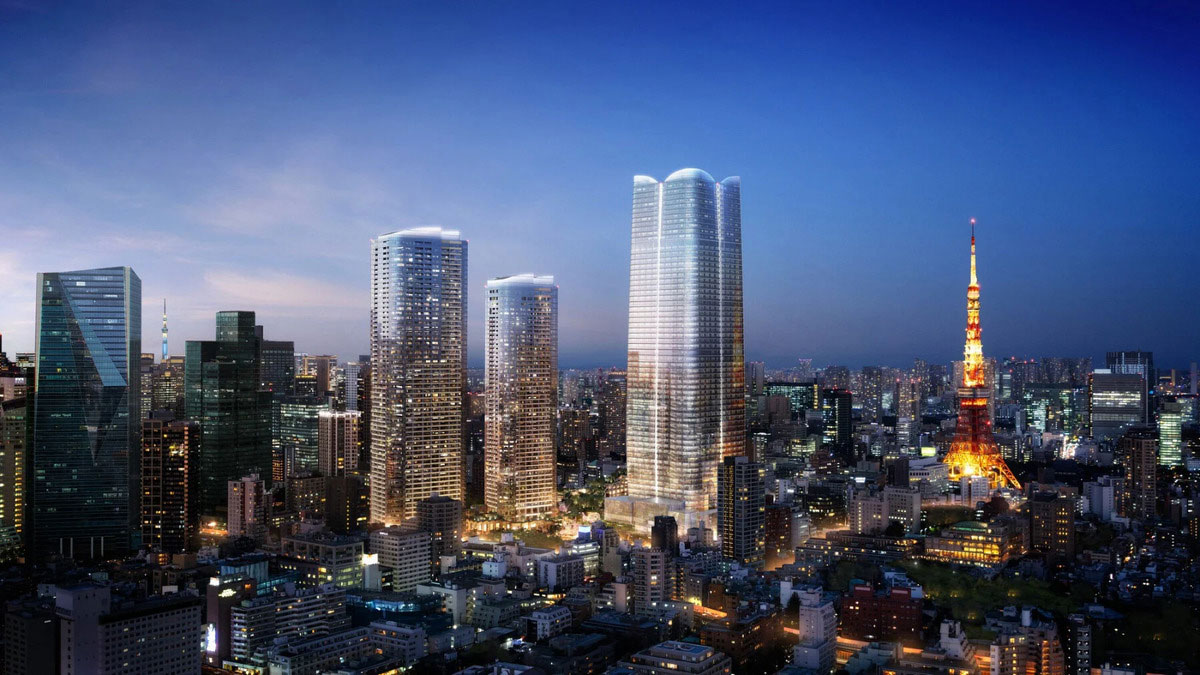
The Toranomon-Azabudai District, also known as Azabudai Hills, is a remarkable ongoing development in Tokyo, Japan, featuring three impressive skyscrapers. Notably, this complex will soon be home to Japan’s tallest building, a significant architectural achievement.
Key Points:
- Mori JP Tower: The centerpiece of this development, the Mori JP Tower, is set to reach an astonishing height of 325 meters, spanning 64 floors, and it’s poised to become Tokyo’s first supertall structure.
- Additional Skyscrapers: In addition to the Mori JP Tower, two other remarkable buildings will grace the skyline, with heights of 263 meters and 237 meters.
- Versatile Functions: Azabudai Hills will offer a wide array of functions, including office spaces, residential units, commercial facilities, a luxurious hotel, cultural amenities, and an international school.
- Contractors: The Shimizu Corporation serves as the main contractor for the Mori JP Tower, while the renowned Permasteelisa Group specializes in crafting the facades of these magnificent structures.
- Innovative Technology: The project incorporates cutting-edge technology, such as ‘robot-welder’ welding robots responsible for welding massive steel columns, both underground and above-ground, accounting for about 15% of the total welding work.
- Robo-Carriers: Five ‘Robo-Carrier’ conveyor robots efficiently transport materials from elevators to their designated locations, contributing significantly to the progress of this monumental construction endeavor. To date, they’ve transported around 40,000 pallets of materials.
5. JFK Airport Expansion Projects
Location: New York City, US
Total Cost: US$14.2 billion
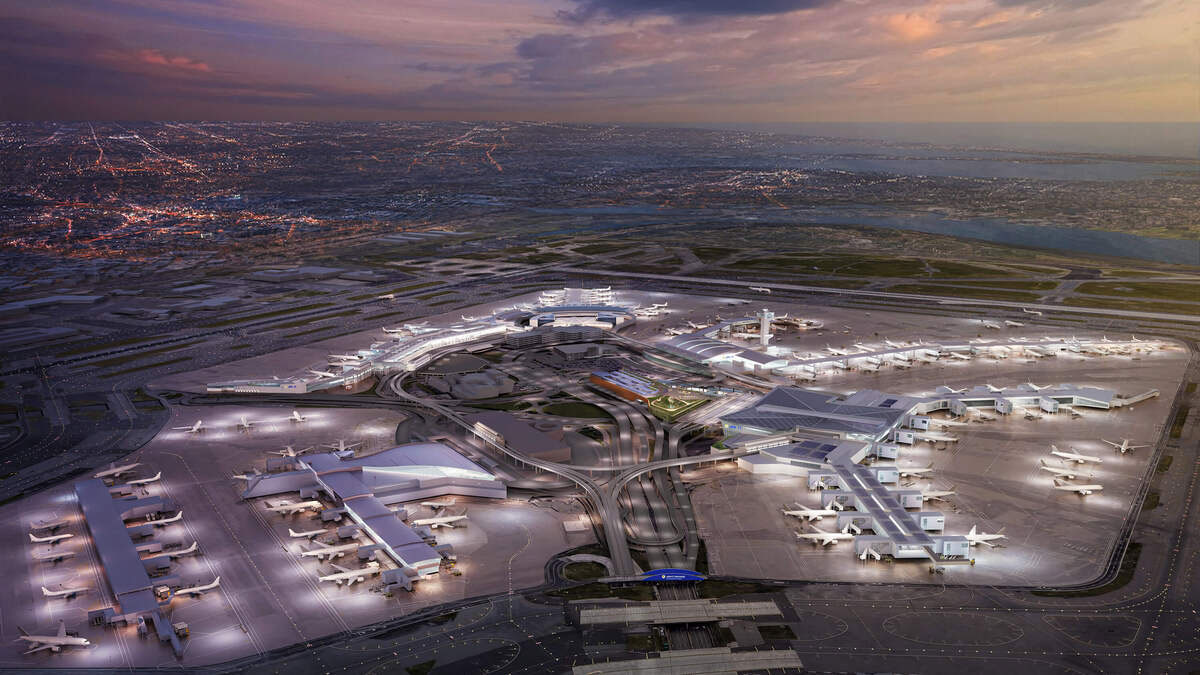
John F. Kennedy International Airport is undergoing significant transformations to accommodate its projected growth, with a particular focus on modernizing key terminals and expanding its capacity.
Key Points:
- Terminal 8 Modernization: Commenced in 2019 and concluded in 2022.
- Ongoing Expansion: Construction activities are planned for Terminals 1, 4, and 6 in the upcoming year.
- Terminal 1 Project: Groundbreaking in September 2022 with a budget of US$9.5 billion.
- Led by AECOM Tishman and Gensler.
- Includes 23 state-of-the-art gates, retail and dining spaces, and an indoor green oasis.
- Project Timeline: Expected completion and passenger utilization of the current project by 2026, with the broader expansion initiative projected to conclude by 2030.
- Enhanced Airport Experience: The revitalization aims to improve capacity, functionality, and overall traveler experience, aligning with the airport’s vision for the future.
6. Tren Maya
Location: Mexico
Total Cost: US$15 billion
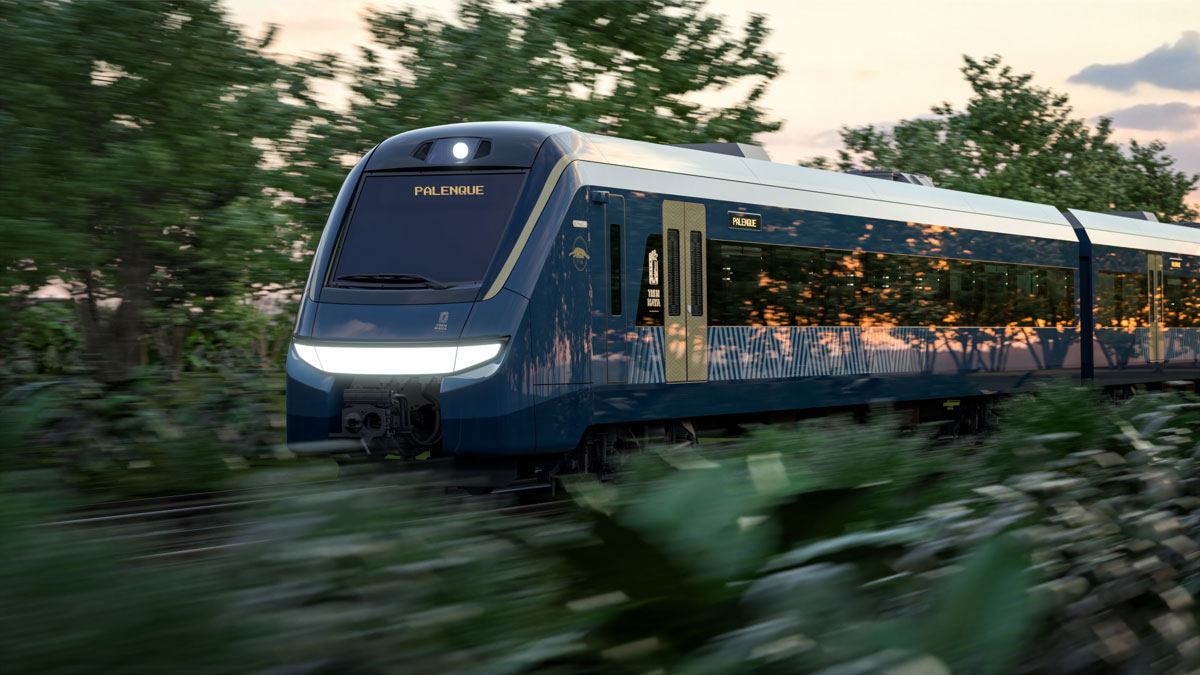
Tren Maya is an ambitious intercity railway project spanning 950 miles across the picturesque Yucatan Peninsula. It aims to connect stunning beach resorts with ancient Mayan sites, catering to both passenger transportation and tourism.
Key Points:
- Extensive Railway: Tren Maya covers an impressive 950-mile intercity railway network.
- Mixed-Use Purpose: The project serves as a versatile mixed-use railway line, linking beach resorts and ancient Mayan sites.
- Speed and Purpose: Designed for a top speed of 160 km/h, it fulfills both passenger and tourism needs.
- Inaugural Section: The first section, from Palenque to Mérida, began construction in 2020 and is expected to start operations in 2024.
- Construction Partners: Various construction companies are leading different sections, including Mota-Engil México and China Communications Construction Company, Operadora CICSA, FCC Construcción, Construcciones Urales, GAMI Ingeniería e Instalaciones, and Grupo ICA.
7. Delhi-Mumbai Industrial Corridor
Location: Dehli-Mumbai
Total Cost: $100 billion (£74bn)
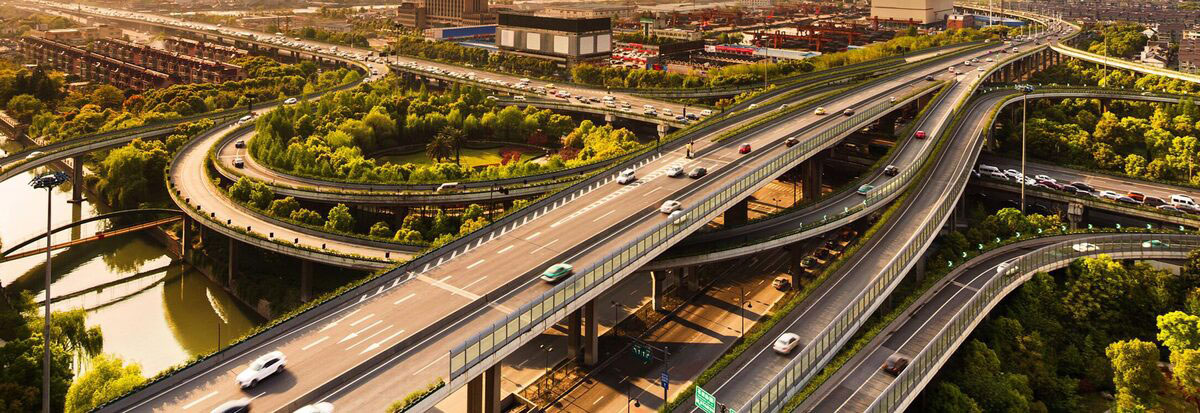
The Delhi-Mumbai Industrial Corridor (DMIC) was an ambitious $90 billion infrastructure project designed to span the 1483-km distance between Delhi and Mumbai. This colossal initiative aimed to establish new industrial townships, develop high-speed freight lines, construct six-lane expressways, enhance airports and ports, and build power plants. Beyond its physical infrastructure, the DMIC promised to offer a unique opportunity to plan and construct new cities that embodied economic, social, and environmental sustainability.
The project carried the potential to revitalize India’s flagging manufacturing sector, attract foreign investments, bolster exports, create job opportunities, and place the nation on a higher growth trajectory. However, it also faced substantial risks, particularly related to land acquisition and the imperative for unprecedented levels of coordination among various government agencies.
Key Points:
- Objectives:
- Create new industrial townships
- Develop high-speed freight lines
- Construct six-lane expressways
- Enhance airports and ports
- Build power plants
- Design new cities with economic, social, and environmental sustainability
- Potential Benefits:
- Revive India’s manufacturing sector
- Attract foreign investments
- Boost exports
- Generate job opportunities
- Propel the nation toward higher growth
- Key Risks:
- Land acquisition challenges
- Need for unprecedented coordination among government agencies
- Central Figure:
- Amitabh Kant, CEO of the Delhi-Mumbai Industrial Corridor Development Corporation (DMICDC)
- Objective of the Case Study:
- To assess whether Amitabh Kant could deliver on the project’s promises.
8. Tun Razak Exchange
Location: Malaysia
Total Cost: $10 billion
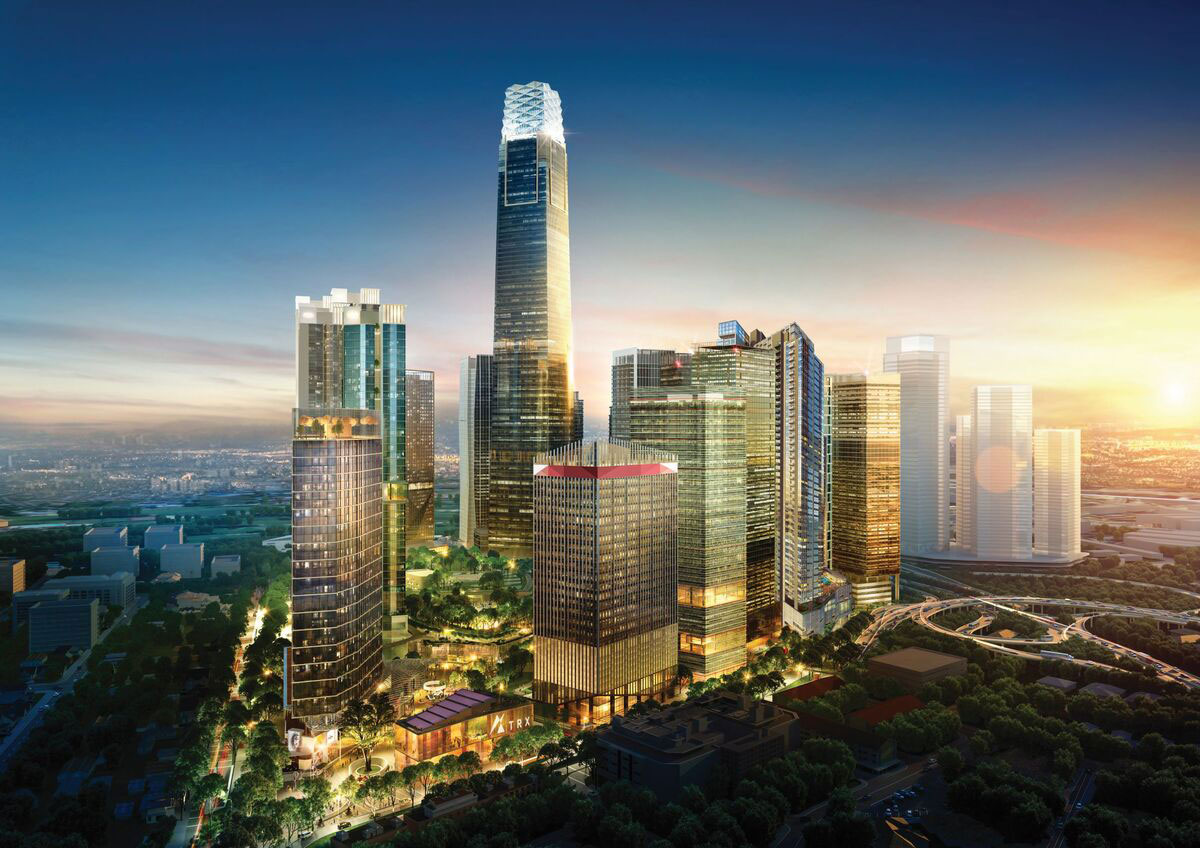
In 2010, the Malaysian government launched an ambitious plan to transform the country into a high-income nation by 2020. At the heart of this initiative was the Tun Razak Exchange, Malaysia’s first dedicated international financial hub as construction megaprojects. Drawing inspiration from global financial districts like Canary Wharf, Pudong, and Marina Bay Sands, this project aimed to create a sprawling precinct featuring office spaces, a massive mall, and residential units.
Key Points:
- Visionary Project: The Tun Razak Exchange is a visionary project, spanning 70 acres and offering approximately 2.5 million square feet of office space.
- Mega Mall: The development includes a colossal 2 million square foot mall, providing a hub for shopping and entertainment.
- Residential Units: Nearly 4,000 residential units are part of the plan, catering to diverse housing needs.
- COVID-19 Impact: The project faced substantial setbacks due to the COVID-19 pandemic, aggravated by Malaysia’s strict movement control measures, leading to significant construction delays.
- Landmark Achievement: Despite the challenges, 2022 marked the completion of Exchange 106, Southeast Asia’s tallest building, a significant milestone.
- Future Prospects: Anticipation grows for the addition of two massive residential blocks, scheduled for completion in 2024, further shaping the Tun Razak Exchange’s future.
9. Iconic Tower
Location: Egypt
Total Cost: $3.8 billion
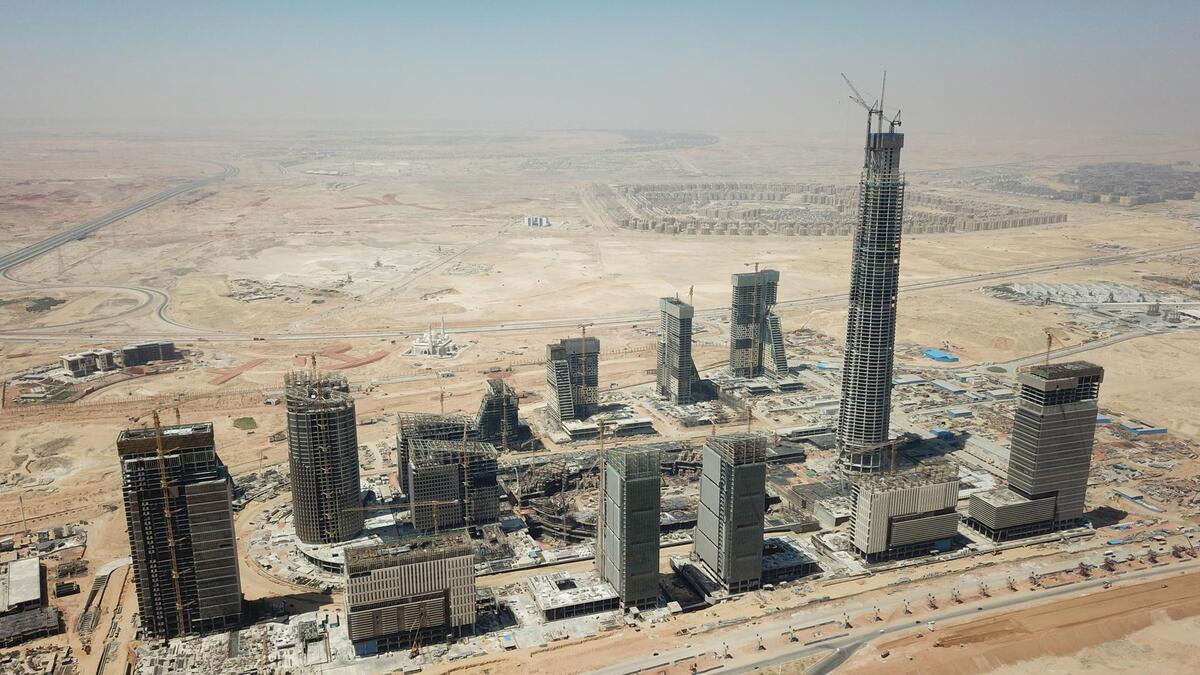
When it comes to construction megaprojects, few places can match Egypt’s rich history. Now, they boast a modern icon in the desert – not the Great Pyramid of Giza, but the newly erected skyscraper aptly named “The Iconic Tower.”
This impressive structure serves as the centerpiece of Egypt’s New Administrative Capital’s business district. To address the longstanding issue of chronic overcrowding in Cairo, the government embarked on an audacious endeavor in 2015 – constructing an entirely new city in the expansive desert.
This project is a testament to Egypt’s dedication to modernization and growth, blending its rich historical heritage with contemporary architectural marvels.
Key Points:
- Construction Timeline: The construction of “The Iconic Tower” commenced in 2019 and reached its pinnacle in 2021, soaring to a towering height of 393 meters.
- Africa’s Tallest Building: “The Iconic Tower” has claimed the title of Africa’s tallest building, marking a significant architectural achievement for the continent.
- First Supertall Skyscraper: This skyscraper also holds the distinction of being Africa’s first supertall skyscraper.
- New Administrative Capital: Located in Egypt’s New Administrative Capital, the tower symbolizes the city’s transformational growth and development.
- Addressing Overcrowding: The ambitious project aims to address the issue of chronic overcrowding in Cairo by creating a new city in the desert.
- Skyscraper Cluster: “The Iconic Tower” is set to be joined by 20 proposed skyscrapers within the burgeoning business district, representing a substantial investment of USD $3 billion.
- Long-Term Investment: If these skyscrapers endure as long as some of their neighboring architectural marvels, the investment is poised to yield substantial returns.
- Egypt’s Bold Vision: Egypt’s commitment to innovation and expansion in the desert is shaping a bold, new chapter in the nation’s history, with “The Iconic Tower” as a prominent symbol of this vision.
10. 308 Exhibition Street
Location: Australia
Total Cost: $250 million
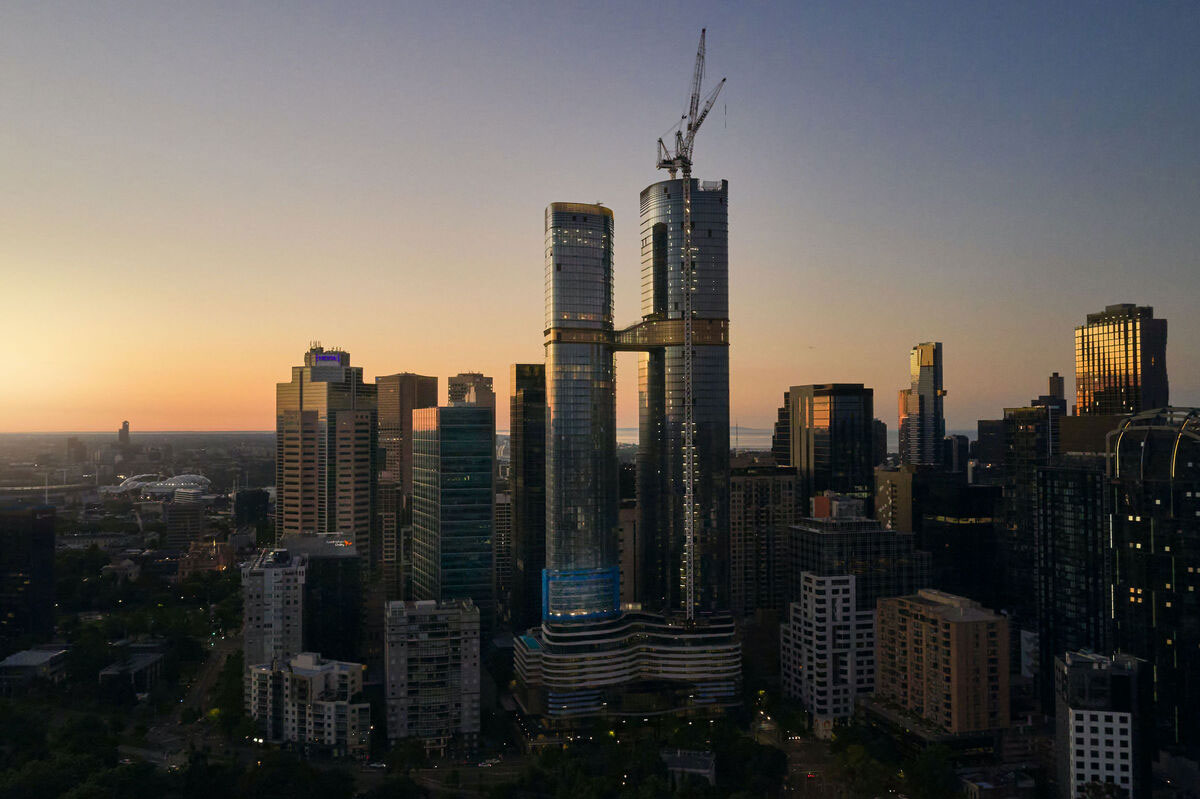
Have you ever marveled at the sight of gleaming skyscrapers in a city’s skyline? Melbourne, Australia, boasts not one but two remarkable skyscrapers at 308 Exhibition Street, and what sets them apart is a stunning sky bridge that connects these twin towers.
Key Points:
- Skybridges, while not entirely novel, have evolved into intricate and artistic structures that distinguish skyscrapers in urban landscapes.
- At 308 Exhibition Street in Melbourne, a meticulously designed sky bridge adorned with opulent golden trim elegantly unites a residential tower and a hotel tower, seamlessly connecting them on the 46th floor and providing a unique passage between the two.
- The construction of this resplendent golden sky bridge began with the careful placement of a plywood deck, extending as a cantilever from the shorter of the two buildings.
- Sturdy steel tendons were installed between the towers, and a robust concrete slab was meticulously poured to reinforce the structure.
- To complete the bridge, a roof was delicately fitted in between, creating an aesthetic reminiscent of a ribbon gracefully encircling one floor of the apartment building and two floors of the hotel tower.
- For structural integrity and safety, one side of the roof was equipped with a movement joint, allowing the bridge to flex when necessary. This ingenious design not only enhances the bridge’s aesthetic appeal but also ensures the stability of the two towers during seismic activity and strong winds, dispelling any concerns that the resplendent golden ribbon might be merely decorative.
11. Las Vegas Grand Prix
Location: Las Vegas
Total Cost: $37 million
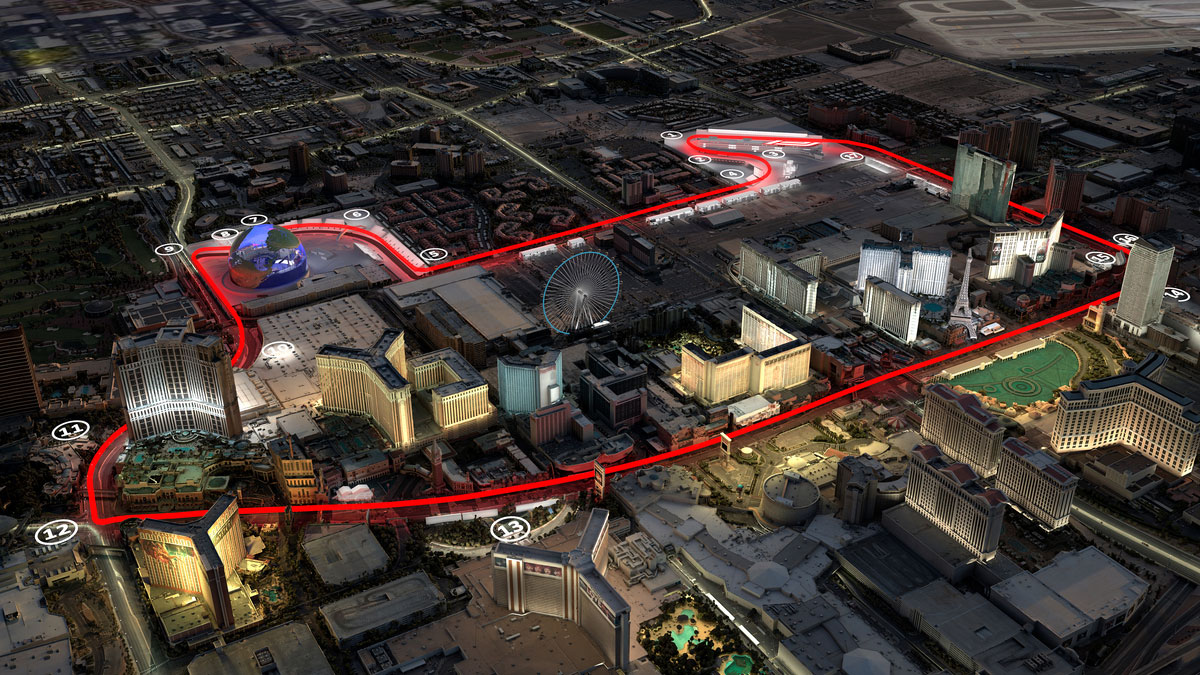
Get ready for a thrilling ride as we shift from one high-speed project to another, because this year promises the debut of the Las Vegas Formula 1 Grand Prix. Las Vegas, the iconic entertainment capital of the world, is about to take its reputation for non-stop excitement to new heights.
These construction megaprojects promise to be an extraordinary blend of technology, human skill, and urban innovation. Against the backdrop of neon lights and iconic landmarks, the Las Vegas Formula 1 Grand Prix will unveil a 6.12-kilometer track, strategically designed with 17 corners, a challenging chicane, and three sprawling straights that will propel these remarkable machines to breathtaking speeds of up to 212 miles per hour.
Key Points:
- November 2024: The Las Vegas Formula 1 Grand Prix debuts, featuring some of the world’s fastest cars racing down the iconic Las Vegas Strip.
- The Track: A 6.12-kilometer track with 17 corners, a chicane, and three lengthy straights, allowing speeds of up to 212 miles per hour.
- The B1M’s Involvement: The B1M, with its rich history in Formula 1, recognizes the complexities of organizing races in urban areas like Las Vegas.
- Safety First: Safety is paramount, and construction teams play a critical role in keeping high-speed action on the racetrack.
- Concrete Barriers: An impressive 4,000 concrete barriers, each containing over three and a half tonnes of reinforced concrete, are being meticulously crafted for the event.
- Minimal Traffic: Despite Las Vegas’s notorious traffic, during the event, traffic jams will be nonexistent in this exhilarating hotspot.
The Resilience and Imperative of Construction Megaprojects
However, conventional megaproject delivery presents inherent challenges. Poor performance in terms of actual costs and benefits is common due to various factors: Construction megaprojects entail inherent risks owing to their complexity and lengthy timelines. Decision-making often involves multiple stakeholders with conflicting interests. Non-standard technology and design choices can lead to managerial biases.
Commitment to a project concept at early stages may limit alternative analysis. Large budgets may encourage rent-seeking behavior. The scope and ambition of construction megaprojects can change significantly over time. Notably, statistical evidence highlights the frequent oversight of complexity and unplanned events in budgeting. Misinformation about costs, schedules, benefits, and risks contributes to cost overruns, delays, and benefit shortfalls.
Megaproject Challenges and the ‘Break-Fix’ Paradox
Despite some notable exceptions, data consistently reveal that construction megaprojects tend to exceed budgets, overrun schedules, and fall short of anticipated benefits—a phenomenon often referred to as the “iron law.” Weak front-end planning and downstream management contribute to this underperformance. Interestingly, despite these challenges and performance issues, the demand for construction megaprojects has never been higher, both in terms of size and frequency.
This paradox has led to a delivery model termed the “break-fix” approach. In this model, projects often encounter difficulties, necessitating a pause and reorganization to rectify issues and deliver a version of the initial plan, albeit with some semblance of success.
Unfortunately, this approach is inefficient and results in resource misallocation. The convergence of the megaproject paradox with the break-fix model has created an environment akin to “inverted Darwinism,” where projects that appear promising on paper can become the least fit for implementation. This underscores the urgent need for innovative approaches and better incentives to ensure the successful delivery of mega projects.
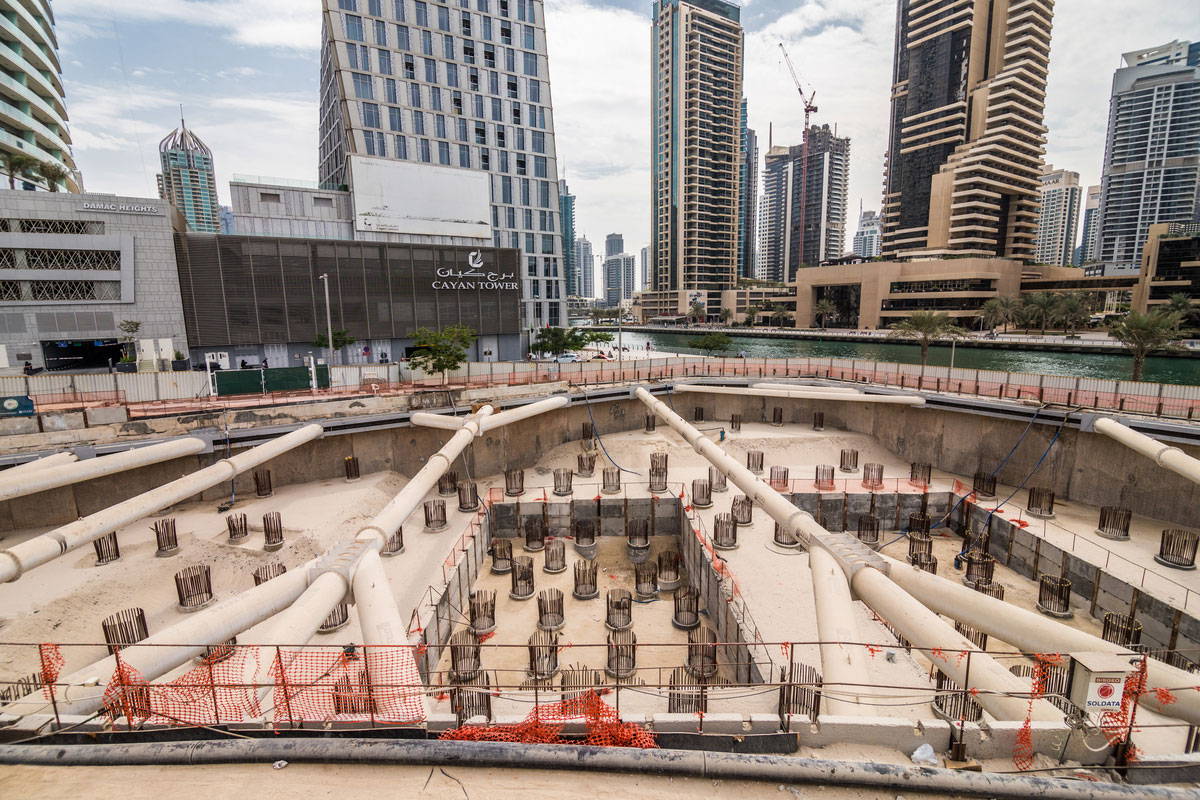
Redefining Megaproject Management: Challenges and Solutions
In the realm of megaproject management, underestimating costs and overestimating benefits can cast a deceptive shadow, leading to a skewed benefit-cost ratio. This distortion, unfortunately, often prompts projects to commence without sound financial or economic viability, sometimes even taking precedence over more promising endeavors.
The consequence? Resources are misallocated, and, in the case of public projects, taxpayers’ money is squandered. Beyond fiscal implications, ethical and legal concerns loom large. construction megaprojects managed under the “break-fix” model teeter on the brink of impending disasters.
But is there a glimmer of hope on the horizon? Thankfully, yes. The construction megaprojects community has begun addressing these pressing issues, sparking the crucial conversations that can drive change. Concurrently, academic research has made significant strides, unveiling the pitfalls of optimism bias while introducing more robust explanations for megaproject outcomes.
These revelations have paved the way for the development of improved management methodologies, now widely embraced in practice and even mandated for certain project types.
Yet, a more pragmatic impetus for enhancing management practices emerges from the stark consequences of failure. Some construction megaprojects have grown so colossal and consequential that cost overruns, benefit shortfalls, or unchecked risks can precipitate the downfall of executives and entire corporations.
The prosperity of cities and nations, too, hangs in the balance, tethered to the success or failure of a single megaproject. It is this dual imperative of ethics and self-preservation that fuels the drive to redefine the landscape of megaproject management.
The Global Megaproject Landscape: Unprecedented Growth
Construction megaprojects are witnessing an unprecedented surge, reshaping various industries and regions. Notably, industries such as transportation, energy, aerospace, information technology, supply networks, and defense are experiencing transformation due to this phenomenon. This shift signifies a fundamental change in how societies tackle complex endeavors.
- The global market for construction megaprojects, estimated at $6 to $9 trillion annually, continues to grow.
- These projects demonstrate resilience even during economic downturns, underlining the need for meticulous planning and alignment with societal, economic, and environmental goals.
- Construction megaprojects have far-reaching impacts on entire countries, making systematic understanding essential.
Four main factors, referred to as “sublimes,” explain the expansion of these projects:
- Technological sublime: Driven by engineers and technicians pushing boundaries.
- Political sublime: Propelled by politicians seeking prestige through massive infrastructure.
- Economic sublime: Fueled by economic benefits, job creation, and financial gains.
- Aesthetic sublime: Attracted to the visual and iconic aspects of these projects.
Despite challenges, construction megaprojects offer significant advantages:
- Job creation
- Domestic resource utilization
- Enhanced productivity and competitiveness
- Improved customer service standards
- Positive environmental outcomes
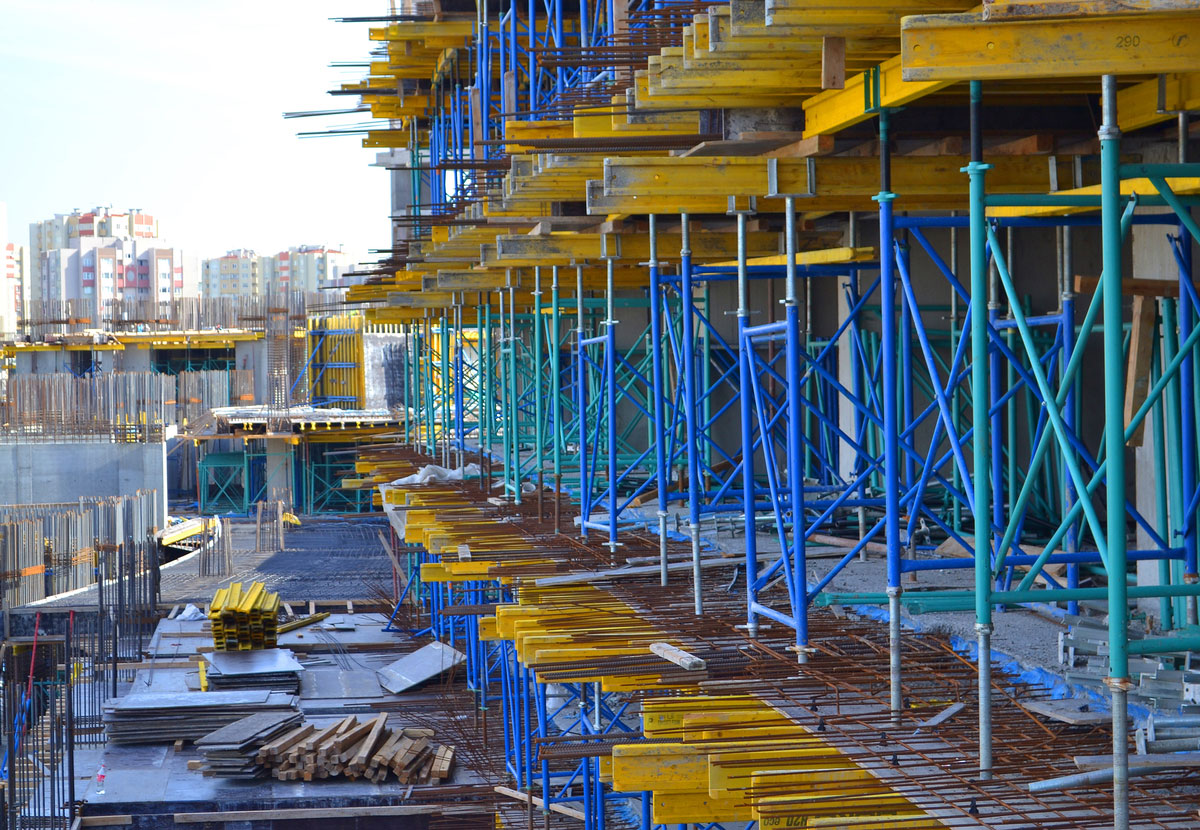
Navigating Megaproject Challenges: The Iron Law and Break-Fix Model
The landscape of construction megaprojects is riddled with long-standing challenges spanning over seven decades. Issues such as cost overruns, schedule delays, and subpar outcomes have persisted, with alarming statistics revealing the inherent risks associated with these endeavors.
- High Incidence of Cost Overruns: Nearly 90% of construction megaprojects experience cost overruns, often surpassing 50% of the original budget, underscoring the inherent risk involved.
- Complexity Breeds Problems: The intricate designs and extended timelines of construction megaprojects provide fertile ground for complications. The involvement of multiple stakeholders with diverse interests often leads to disputes and inefficiencies.
- Limitations on Innovation: Early commitments to project concepts can hinder the exploration of more practical alternatives, while unconventional technologies may introduce biases into project management.
- Rent-Seeking Behavior: The substantial expenditures in construction megaprojects can encourage rent-seeking behavior, with project scopes and ambitions evolving over time.
- Underestimation of Complexity: Statistical evidence highlights a tendency to underestimate the complexity and unpredictability of construction megaprojects, leading to budgetary oversights due to incomplete information.
- The “Iron Law”: This recurring pattern, known as the “iron law,” sees construction megaprojects frequently exceeding budget and schedule constraints while delivering subpar results.
- Increasing Demand Despite Challenges: Paradoxically, the demand for construction megaprojects continues to rise in terms of both frequency and scale despite these challenges.
- The “Break-Fix” Strategy: To address ongoing problems, the “break-fix” strategy has emerged, involving mid-project course corrections. However, this approach is ineffective, leading to resource misallocation and heightened risks.
- Need for Creative Solutions: To tackle this predicament, innovative solutions and improved incentives are essential for the successful completion of these colossal tasks.
- Revisiting Management Procedures: It is imperative to reevaluate management practices and commit to transparency in project planning and execution, as explored in the following section.
Conclusion
In conclusion, the world of construction megaprojects is a captivating arena where ambition meets complexity, innovation intertwines with monumental scale, and colossal challenges mirror the structures themselves. Through this exploration, we’ve witnessed audacious human ambition and the relentless drive to redefine the boundaries of construction and engineering.
From towering skyscrapers in Frankfurt and Egypt’s Iconic Tower to the ambitious railway network of Tren Maya and JFK Airport’s transformation, these construction megaprojects showcase human ingenuity, determination, and vision. Each project presents unique challenges, encompassing financing, technological advancements, political intricacies, and environmental considerations.
Despite the daunting hurdles and historically high risks, construction megaprojects continue to captivate our imagination and stimulate economies. They promise to reshape urban landscapes, boost local economies, and offer opportunities for employment, tourism, and innovation.
However, these projects carry a paradoxical nature, offering both high risks and rewards. While they hold the potential for substantial benefits, they often grapple with cost overruns, delays, and complex decision-making. Addressing these challenges demands innovative project management, meticulous planning, transparency, and effective governance. Construction megaprojects require significant financial investments and a deep understanding of the multifaceted dynamics involved.
Looking ahead, the world’s hunger for construction megaprojects remains insatiable, driven by a desire to create iconic landmarks, modernize infrastructure, and boost economies. Yet, the lessons learned from the past underscore the importance of informed approaches to these grand endeavors.
Successful execution hinges on collaboration, innovation, and a commitment to delivering lasting value to communities. These projects are more than structures; they shape the future, leave a legacy, and push the boundaries of human achievement. They inspire us to dream bigger, reach higher, and continue building a world that astonishes and inspires generations to come.
FAQs
What are Construction Megaprojects, and Why are they Significant?
- Answer: Megaprojects in construction are massive infrastructural projects, frequently costing more than $1 billion. Due to their ability to generate employment, grow industries, and improve competitiveness internationally, these projects are essential in changing economies and urban environments. They cover a range of industries, including technology, energy, and transportation. Two prominent examples are the Tun Razak Exchange in Malaysia and China’s high-speed rail system.
What Drives the Growth of Construction Megaprojects Globally?
- Answer: Four major “sublimes” are driving the global expansion of Construction Megaprojects: the technological push from engineers and innovators, political aspirations, commercial economic gains, and the famous designs’ aesthetic appeal. These elements work together to ensure that industries continue to demand bigger, more complicated projects.
Why do Construction Megaprojects Often Face Delays and Cost Overruns?
- Answer: Construction Megaprojects often have enormous complexity, unanticipated difficulties, and many parties involved, which causes delays and cost overruns. According to statistics, because to resource mismanagement, project scope changes, and underestimating hazards, about 90% of megaprojects end up overspending their budgets—sometimes by more than 50%.
What are some of the Biggest ongoing Construction Megaprojects Worldwide?
- Answer: The New Administrative Capital in Egypt ($3 billion), the Fontainebleau resort in Las Vegas ($3.7 billion), the Toranomon-Azabudai District in Japan ($4.2 billion), and the Delhi-Mumbai Industrial Corridor in India ($100 billion) are a few of the biggest current megaprojects. These initiatives demonstrate the worldwide reach and revolutionary potential of construction megaprojects.
How do Construction Megaprojects Impact Local Economies and Societies?
- Answer: Megaprojects in the construction industry greatly strengthen local economies by generating employment, enhancing infrastructure, and promoting economic expansion. By offering public services, housing, and transportation, they also improve social well-being. To ensure long-term success, they also present certain problems, such as issues with land acquisition and environmental effect, which require careful management.
Why do Construction Megaprojects Often Face Cost Overruns and Delays?
- Answer: Due to their complexity, competing stakeholder interests, managerial biases, rent-seeking behavior, and underestimating of hazards, construction megaprojects frequently go over budget and schedule. It is difficult to anticipate costs and schedules with accuracy because of these issues.
What is the “Break-fix” Model in Construction Megaprojects, and why is it Ineffective?
- Answer: Under the “Break-fix” strategy, projects are put on hold while problems are resolved as they come up. It is ineffectual because it causes inefficiency, risk-taking, and the misallocation of resources, all of which lead to poor project outcomes.
Suggested articles for reading:
LCA and Carbon Footprint: 10 Effective Reduction Strategies
The Role of PIM in Sustainable Construction (2024)
IIoT Technology: Top 7 Sustainable Practices It Enables
Top 23 Famous Women Architects in World; 2024 Review
11 Top Construction Project in Iran
important construction technology in 2024
7 Important Building Technology Ideas for 2024
Resources:
International Construction | TheB1M | Project Management Institute | Medium | McKinsey and Company | Indeed | Construction Industry Institute | US Department of Labour | The New York Times | Harvard Business School | Urban | 8NewsNow
For all the pictures: Unsplash | Freepik | bollinger-grohmann | worldcrunch | costar | Designboom | grimshaw | alstom | hexagon | construction plus asia | the national news | stilconscaffolding | 8newsnow





